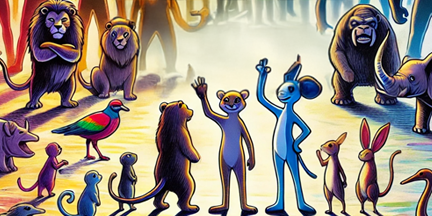
In the colorful, zany world of children’s cartoons, there’s a serious issue lurking beneath the surface: violence. From Tom chasing Jerry with a mallet to superheroes defeating villains with a barrage of punches, violence is often portrayed as comical or heroic.
Research has long established that children who watch violent cartoons are more likely to become aggressive, both verbally and physically. It can desensitize children to real-world violence and reduce their empathy towards others.
The good news is that these impacts can be diminished by introducing children to books that don’t resort to violence. That’s because – unlike most cartoons that rely on visual and auditory stimulus to keep kids engaged – they use compelling narratives, relatable characters, and creative solutions that help children develop their imagination and empathy.
Understanding other people’s feelings is a key aspect of emotional intelligence. Asking children how they feel about a story, its characters’ choices, and what they might have done in a similar situation can promote their critical thinking and emotional intelligence.
The classic children’s book Charlotte’s Web by E. B. White presents challenges and emotional stakes without incorporating violent themes. As the spider, Charlotte, works to save her friend Wilbur the pig, young readers learn about empathy, resourcefulness, and the power of words.
Another classic – The Story of Ferdinand by Munro Leaf – tells the tale of a pacifist bull who loves smelling flowers instead of engaging in bullfights. Ferdinand, even when faced with an environment that promotes aggression, provides a lesson about being true to oneself and handling conflict with calmness and serenity.
